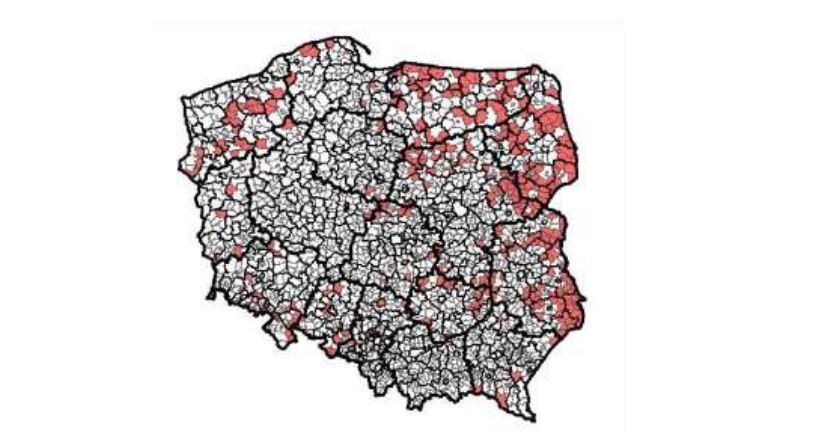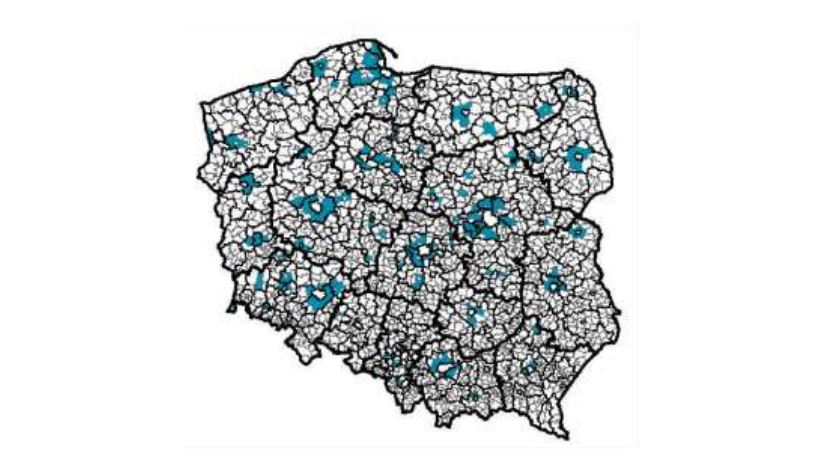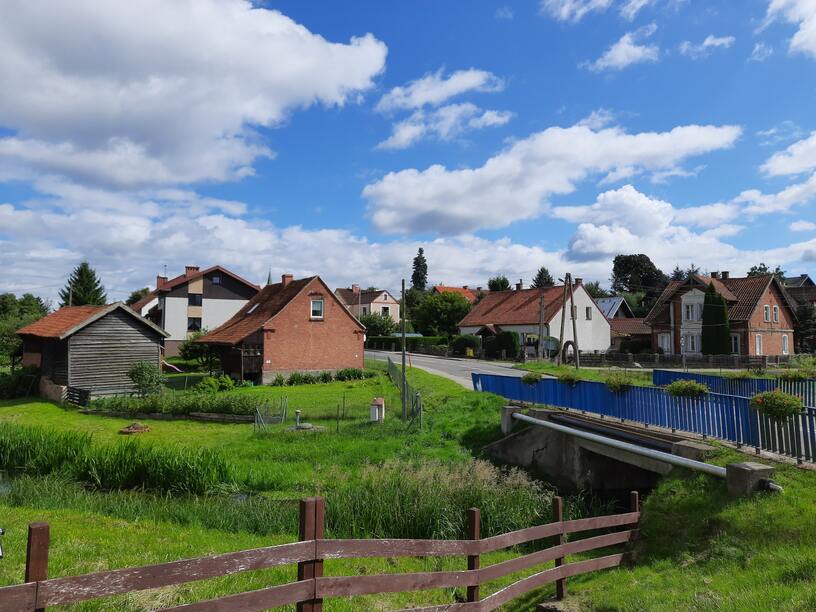Eastern Poland has seen population declines over the last decade while areas around large cities have attracted more residents, newly released census data show.
The figures also show that Wrocław has overtaken Łódź as Poland’s third largest city, while Poland’s total population fell by 1.2% from 2011 to 2021, to 38,036,118 people. The number of areas in which people aged over 65 make up more than 20% of the population increased tenfold.
Of the 2,477 municipalities in Poland, 1,776 had a smaller population in 2021 than a decade earlier. In 1,181, the decline in the population was larger than 5% and in 397 larger than 10%, according to the data published by Statistics Poland (GUS), a state agency, on Tuesday.
The majority of areas with the largest population declines were in the east, an area that is more rural and historically less economically developed than western parts of the country.

Municipalities with a population decline of more than 10% in 2021 vs 2011; source: GUS
“Most of the municipalities that recorded a large decrease in population (above 10%) are located in the areas of the so-called “eastern wall”,” wrote GUS. “A particular concentration of such municipalities can be found in the Podlaskie region.”
In Podlaskie almost half of municipalities noted a population decline over the last decade. By contrast, areas around large metropolises saw the strongest growth.
“The highest population growth was mainly observed in municipalities located in the immediate vicinity of the largest urban centres, which is a result of the appeal of the large agglomerations as attractive labour markets,” said GUS, adding that the expansion of suburbs was also observed in medium-sized cities.

Municipalities with a population increase of more than 10% in 2021; source: GUS
At the same time, the proportion of municipalities where the percentage of people aged 65 and over was higher than 20% increased significantly throughout Poland, but especially in eastern Poland.
In 2011, there were only 51 such municipalities in Poland, or 2% of all municipalities in the country. In 2021, the number of municipalities with a share of older people exceeding 20% had increased tenfold, and they already accounted for more than one fifth of all municipalities in in Poland
“The ageing of the population is clearly evident,” said GUS’s president Dominik Rozkrut, quoted by news portal Money.pl. “The young are leaving, the old are getting older. This poses a major challenge for social policy.”

Polish municipalities with a percentage of the population aged 65 and over of 20% or more in 2011 and 2021; source: GUS
In the cities themselves, however, the population declined. Of the 37 cities with more than 100,000 inhabitants, only eight saw a population growth: Zielona Góra, Warsaw, Rzeszów, Wrocław, Kraków, Gdańsk, Opole and Białystok.
The remaining cities recorded losses, the largest in Katowice and Łódź (a loss of around 8%), followed by Kielce and Bydgoszcz. That decline saw Łódź lose its status as Poland’s third largest city, with its population (now 670,642) dropping below Wrocław’s (which rose to 672,929)
Poland’s two largest cities remain Warsaw (1,8602,81) and Kraków (800,653), while Łódź is followed by Poznań (546,859), Gdańsk (486,022), Szczecin (396,168) and Bydgoszcz (337,666).
Main photo credit: Bartosz Żygadło/Unsplash

Alicja Ptak is senior editor at Notes from Poland and a multimedia journalist. She previously worked for Reuters.




















